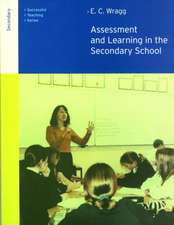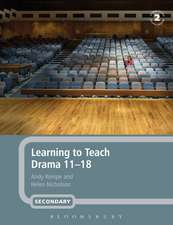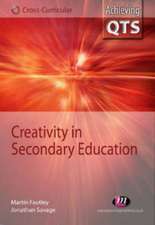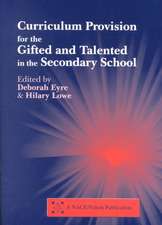The Case Against the SAT: Emersion: Emergent Village resources for communities of faith
Autor James Crouse, Dale Trusheimen Limba Engleză Hardback – 31 mai 1988
Every year, 1.5 million applicants to American colleges and universities take the Scholastic Aptitude Test. Over 1,500 colleges and universities either require or strongly recommend that applicants submit SAT scores. The College Entrance Examination Board and the Educational Testing Service claim that the SAT helps colleges select students, helps college-bound students select appropriate institutions, and furthers equality of opportunity. But does it really?
Drawing on three national surveys and on hundreds of studies conducted by colleges, James Crouse and Dale Trusheim refute the justifications the College Board and the ETS give for requiring high school students to take the SAT. They show that the test neither helps colleges and universities improve their admissions decisions nor helps applicants choose schools at which they will be successful. They outline the adverse effect the SAT has on students from nonwhite and low-income backgrounds. They also question the ability of the College Board and the ETS to monitor themselves adequately.
Crouse and Trusheim do not, however, recommend abolishing either college admissions testing or the College Board and the ETS. Rather, they propose dropping the SAT and relying on such already available measures as students' high school coursework and grades, and they raise the possibility that new achievement tests that measure the mastery of high school courses could be developed to replace the SAT. The Case Against the SAT provides important new information for policymakers, college and university administrators, and researchers in testing and measurement. It forces a rethinking not only of what admissions testing accomplishes now but also of what it might and should accomplish in the future.
Drawing on three national surveys and on hundreds of studies conducted by colleges, James Crouse and Dale Trusheim refute the justifications the College Board and the ETS give for requiring high school students to take the SAT. They show that the test neither helps colleges and universities improve their admissions decisions nor helps applicants choose schools at which they will be successful. They outline the adverse effect the SAT has on students from nonwhite and low-income backgrounds. They also question the ability of the College Board and the ETS to monitor themselves adequately.
Crouse and Trusheim do not, however, recommend abolishing either college admissions testing or the College Board and the ETS. Rather, they propose dropping the SAT and relying on such already available measures as students' high school coursework and grades, and they raise the possibility that new achievement tests that measure the mastery of high school courses could be developed to replace the SAT. The Case Against the SAT provides important new information for policymakers, college and university administrators, and researchers in testing and measurement. It forces a rethinking not only of what admissions testing accomplishes now but also of what it might and should accomplish in the future.
Din seria Emersion: Emergent Village resources for communities of faith
-
 Preț: 144.99 lei
Preț: 144.99 lei -
 Preț: 133.99 lei
Preț: 133.99 lei - 9%
 Preț: 352.50 lei
Preț: 352.50 lei -
 Preț: 146.50 lei
Preț: 146.50 lei -
 Preț: 208.32 lei
Preț: 208.32 lei -
 Preț: 156.84 lei
Preț: 156.84 lei -
 Preț: 115.53 lei
Preț: 115.53 lei -
 Preț: 548.71 lei
Preț: 548.71 lei - 8%
 Preț: 346.31 lei
Preț: 346.31 lei - 8%
 Preț: 360.28 lei
Preț: 360.28 lei -
 Preț: 216.90 lei
Preț: 216.90 lei -
 Preț: 101.43 lei
Preț: 101.43 lei -
 Preț: 215.52 lei
Preț: 215.52 lei -
 Preț: 185.37 lei
Preț: 185.37 lei - 8%
 Preț: 563.24 lei
Preț: 563.24 lei -
 Preț: 179.04 lei
Preț: 179.04 lei -
 Preț: 106.35 lei
Preț: 106.35 lei -
 Preț: 138.81 lei
Preț: 138.81 lei -
 Preț: 273.93 lei
Preț: 273.93 lei -
 Preț: 127.89 lei
Preț: 127.89 lei - 9%
 Preț: 353.24 lei
Preț: 353.24 lei -
 Preț: 176.49 lei
Preț: 176.49 lei -
 Preț: 94.22 lei
Preț: 94.22 lei -
 Preț: 144.80 lei
Preț: 144.80 lei -
 Preț: 126.25 lei
Preț: 126.25 lei -
 Preț: 67.35 lei
Preț: 67.35 lei -
 Preț: 163.52 lei
Preț: 163.52 lei -
 Preț: 138.26 lei
Preț: 138.26 lei -
 Preț: 182.98 lei
Preț: 182.98 lei - 18%
 Preț: 502.35 lei
Preț: 502.35 lei - 18%
 Preț: 2261.34 lei
Preț: 2261.34 lei -
 Preț: 279.55 lei
Preț: 279.55 lei -
 Preț: 116.07 lei
Preț: 116.07 lei -
 Preț: 208.55 lei
Preț: 208.55 lei -
 Preț: 167.85 lei
Preț: 167.85 lei -
 Preț: 160.63 lei
Preț: 160.63 lei -
 Preț: 183.89 lei
Preț: 183.89 lei - 9%
 Preț: 352.77 lei
Preț: 352.77 lei -
 Preț: 307.55 lei
Preț: 307.55 lei - 12%
 Preț: 290.56 lei
Preț: 290.56 lei - 8%
 Preț: 311.68 lei
Preț: 311.68 lei -
 Preț: 120.81 lei
Preț: 120.81 lei -
 Preț: 229.92 lei
Preț: 229.92 lei - 6%
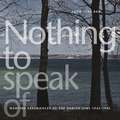 Preț: 324.95 lei
Preț: 324.95 lei -
 Preț: 145.41 lei
Preț: 145.41 lei -
 Preț: 152.07 lei
Preț: 152.07 lei -
 Preț: 186.09 lei
Preț: 186.09 lei - 18%
 Preț: 348.59 lei
Preț: 348.59 lei -
 Preț: 302.76 lei
Preț: 302.76 lei - 8%
 Preț: 565.01 lei
Preț: 565.01 lei
Preț: 498.66 lei
Nou
Puncte Express: 748
Preț estimativ în valută:
95.41€ • 99.63$ • 78.79£
95.41€ • 99.63$ • 78.79£
Carte tipărită la comandă
Livrare economică 15-29 aprilie
Preluare comenzi: 021 569.72.76
Specificații
ISBN-13: 9780226121420
ISBN-10: 0226121429
Pagini: 240
Dimensiuni: 152 x 229 x 20 mm
Greutate: 0.5 kg
Ediția:1
Editura: University of Chicago Press
Colecția University of Chicago Press
Seria Emersion: Emergent Village resources for communities of faith
ISBN-10: 0226121429
Pagini: 240
Dimensiuni: 152 x 229 x 20 mm
Greutate: 0.5 kg
Ediția:1
Editura: University of Chicago Press
Colecția University of Chicago Press
Seria Emersion: Emergent Village resources for communities of faith
Notă biografică
James Crouse is professor of educational studies and sociology at the University of Delaware. Dale Trusheim is assistant director of institutional research and strategic planning at the University of Delaware.
Cuprins
List of Tables
Preface
1. Can We Trust ETS and the College Board to Monitor Themselves?
2. Overselling the SAT since 1926
3. The SAT Does Not Help Colleges Make Better Selection Decisions
4. The SAT Does Not Help Applicants Select Colleges Where They Can Be Successful
5. The SAT Has an Adverse Impact on Black Applicants
6. The SAT Has an Adverse Impact on Low-Income Applicants
7. The Effects of the SAT Have Not Changed since 1960
8. What Is to Be Done?
Notes
Select Bibliography
Index
Preface
1. Can We Trust ETS and the College Board to Monitor Themselves?
2. Overselling the SAT since 1926
3. The SAT Does Not Help Colleges Make Better Selection Decisions
4. The SAT Does Not Help Applicants Select Colleges Where They Can Be Successful
5. The SAT Has an Adverse Impact on Black Applicants
6. The SAT Has an Adverse Impact on Low-Income Applicants
7. The Effects of the SAT Have Not Changed since 1960
8. What Is to Be Done?
Notes
Select Bibliography
Index

